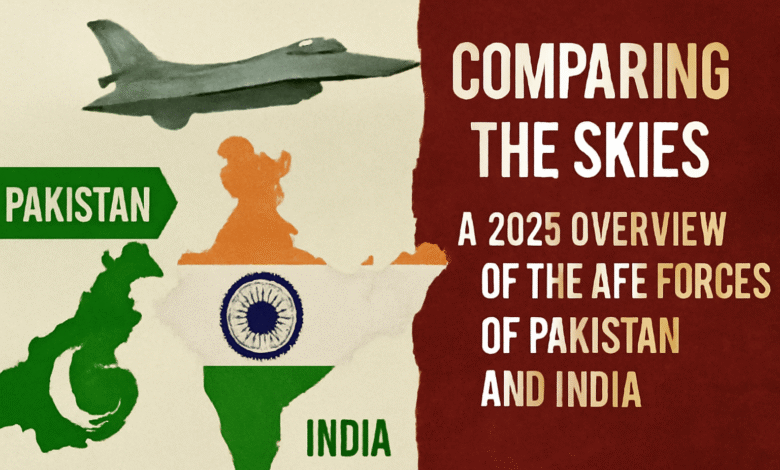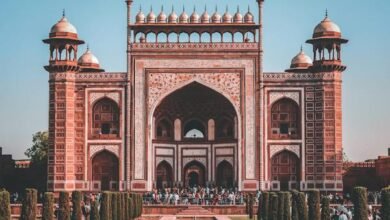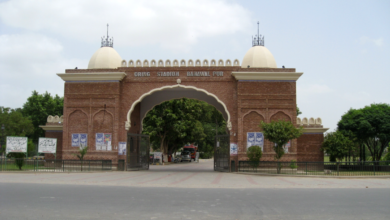
Air Superiority in 2025: A Deep Dive into the Capabilities of India and Pakistan’s Air Forces
The air forces of both India and Pakistan are key pillars of their national defense strategies. As both countries possess advanced aerial capabilities, understanding the balance of power in the skies in 2025 offers valuable insight into their military readiness. India and Pakistan have diverging defense strategies and budgets, which have a direct impact on their air capabilities.
Here is a comprehensive comparison between the Indian Air Force (IAF) and the Pakistan Air Force (PAF), highlighting key factors such as fleet composition, technological advancements, strategic goals, training programs, and regional alliances.
1. Fleet Composition:
Indian Air Force (IAF):
-
Total Aircraft: The IAF operates more than 600 fighter jets, including a mix of indigenous, Russian, and Western designs.
-
Key Aircraft:
-
Dassault Rafale (36 units) – A multi-role fighter known for air superiority and strike capabilities.
-
Sukhoi Su-30MKI (270+ units) – A heavy multi-role fighter with advanced avionics and weapons systems.
-
Tejas – India’s indigenous light combat aircraft, which has entered service but is limited in numbers.
-
Mirage 2000 (40 units) – A French-made multi-role fighter, upgraded with modern avionics.
-
F-16 Fighting Falcons (with the Indian Air Force’s upgraded variants).
-
Unmanned Aerial Vehicles (UAVs): India is rapidly expanding its UAV capabilities, including Heron and Predator drones for surveillance and precision strikes.
-
Pakistan Air Force (PAF):
-
Total Aircraft: The PAF operates around 400 fighter jets, with a greater reliance on Western and Chinese aircraft than India.
-
Key Aircraft:
-
JF-17 Thunder (125+ units) – Jointly developed with China, this is a multi-role fighter used by the PAF in large numbers.
-
F-16 Fighting Falcons (70+ units) – One of Pakistan’s mainstay air superiority fighters, with upgrades from the U.S.
-
Mirage III/V – A versatile French-made aircraft, though fewer in number and gradually being replaced.
-
J-10C (Ordered in 2021) – China’s advanced fourth-generation fighter, seen as a potential game-changer for the PAF.
-
UAVs: Pakistan also operates various UAVs, including CH-3 and Wing Loong systems, often provided by China.
-
2. Technological Advancements:
Indian Air Force (IAF):
-
Avionics and Radar: The IAF is continuously modernizing with advanced radar systems like AESA (Active Electronically Scanned Array) and Optronic Targeting Systems to enhance targeting accuracy and reduce detection risks.
-
Missile Systems: India operates state-of-the-art air-to-air and air-to-ground missile systems, including the Astra and BrahMos missiles (air-launched variants).
-
Indigenous Development: India’s focus on Make-in-India initiatives has bolstered its defense technology. The Tejas fighter, developed by HAL (Hindustan Aeronautics Limited), is a significant step toward self-reliance.
Pakistan Air Force (PAF):
-
Avionics and Radar: Pakistan, with assistance from China, is upgrading its radar systems to include AESA radar and more modern avionics for its fleet, particularly the JF-17 and F-16 aircraft.
-
Missile Systems: The PAF is focusing on air-to-air and air-to-ground missile systems including the SD-10 (Chinese-made), capable of long-range targeting.
-
Indigenous Development: While Pakistan lags behind India in indigenous airframe development, the JF-17 Thunder is a significant achievement, with continuous upgrades being incorporated.
3. Training and Personnel:
Indian Air Force (IAF):
-
The IAF has one of the largest pools of trained pilots, and its training facilities, such as the Air Force Academy in Hyderabad, are equipped with the best technologies.
-
India also benefits from more extensive training on high-tech weaponry and complex multi-role missions, often working with foreign partners for joint exercises (e.g., Malabar exercises with the U.S. and Japan).
Pakistan Air Force (PAF):
-
The PAF has a reputation for highly skilled pilots despite fewer resources. The PAF focuses on high-efficiency training in fast-paced combat scenarios, often preparing for rapid responses and surgical strikes.
-
Pakistan’s air force routinely participates in joint exercises with China and other allies, enhancing its capabilities in a range of conditions.
4. Strategic Goals and Military Doctrine:
Indian Air Force (IAF):
-
The IAF’s primary focus is on maintaining air superiority over the region, ensuring control of the skies in the event of conflict, and providing critical support to ground operations.
-
India’s air doctrine emphasizes offensive operations to strike deep into adversary territory, such as surgical strikes and counter-terrorism missions.
-
Nuclear Deterrence: The IAF also plays a critical role in India’s nuclear deterrence strategy, with aircraft capable of delivering nuclear payloads, particularly the Su-30MKI and Dassault Mirage 2000.
Pakistan Air Force (PAF):
-
The PAF focuses primarily on defensive and retaliatory strategies, maintaining a strong deterrent against potential Indian airstrikes.
-
Tactical Superiority: Pakistan’s air force is geared towards countering an Indian offensive by focusing on asymmetric warfare, such as surprise airstrikes and using terrain for guerrilla-style operations.
-
Nuclear Deterrence: Like India, Pakistan also maintains aircraft capable of delivering nuclear payloads, with JF-17 and F-16 playing pivotal roles in this aspect.
5. Regional Alliances and Partnerships:
Indian Air Force (IAF):
-
Strategic Alliances: India maintains strong defense relations with the United States, Israel, Russia, and other western countries, granting access to advanced technologies and joint training programs.
-
Regional Leadership: India also exercises considerable influence in South Asia, often serving as the air-defense backbone for smaller nations like Sri Lanka and Maldives in the event of foreign threats.
Pakistan Air Force (PAF):
-
Strategic Partnerships: Pakistan’s strongest defense partner is China, which provides significant military aid, including advanced aircraft (e.g., JF-17) and air defense systems.
-
Middle Eastern Ties: Pakistan has significant defense relationships with Saudi Arabia and other Gulf countries, often involving air force personnel exchanges and mutual defense agreements.
Conclusion:
In 2025, the air forces of both India and Pakistan are strong, with India maintaining a numerical advantage and a wider array of advanced aircraft. However, Pakistan continues to make strides in terms of modernization, with significant developments in its fleet and strategic partnerships, particularly with China.
Ultimately, both air forces are finely tuned to their respective strategic needs: India emphasizes offensive capabilities, nuclear deterrence, and regional supremacy, while Pakistan focuses on defense, tactical strikes, and maintaining strategic parity with India.







